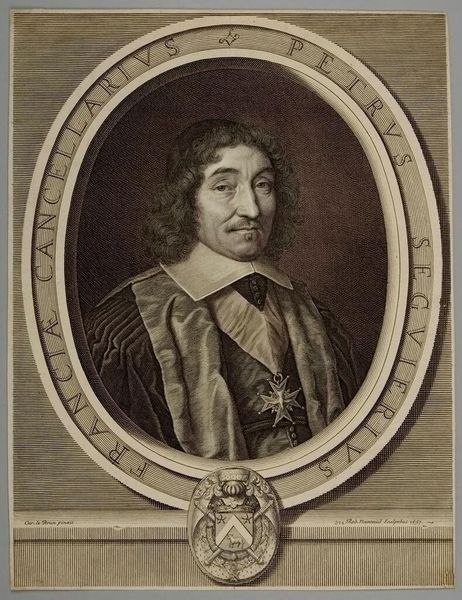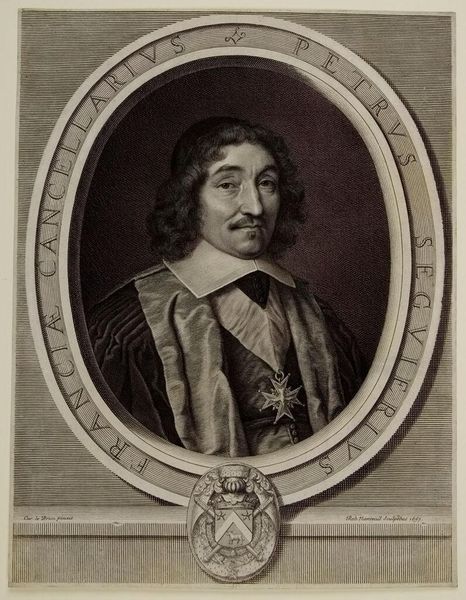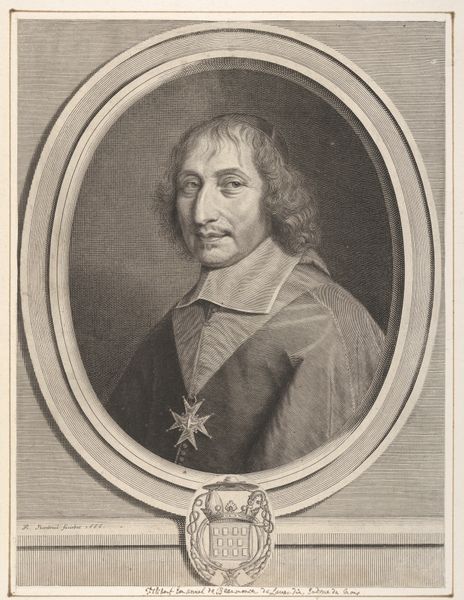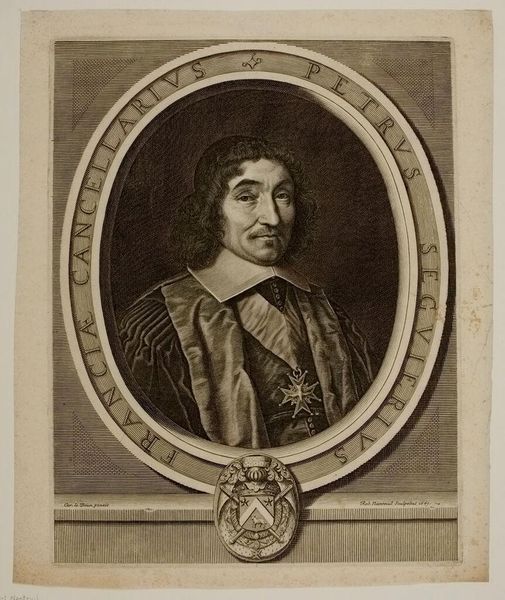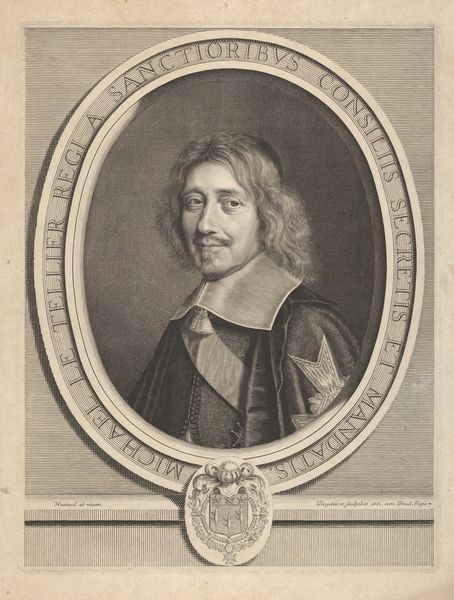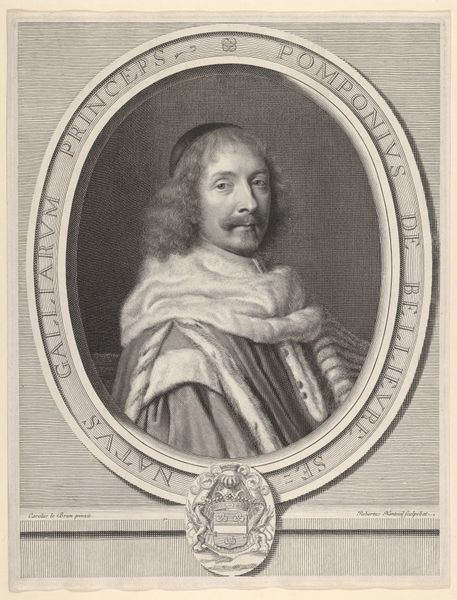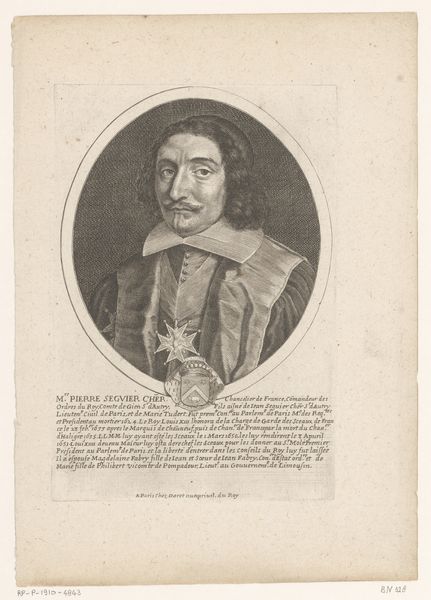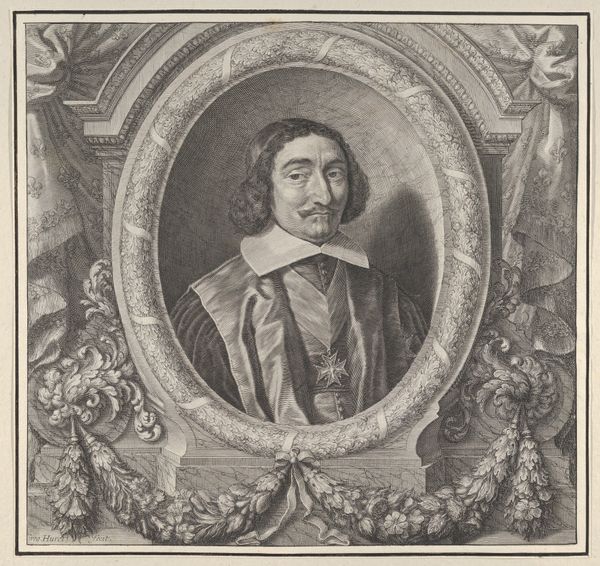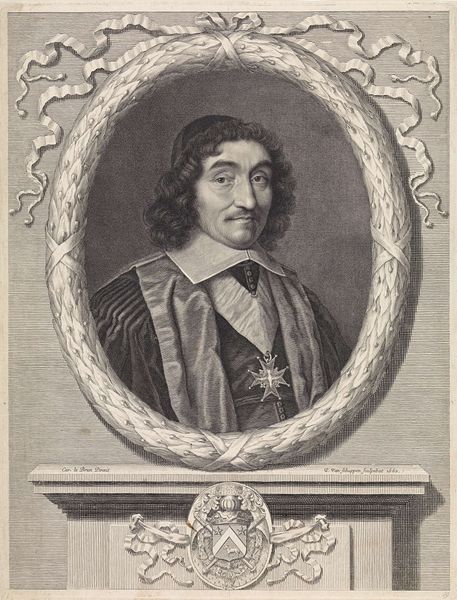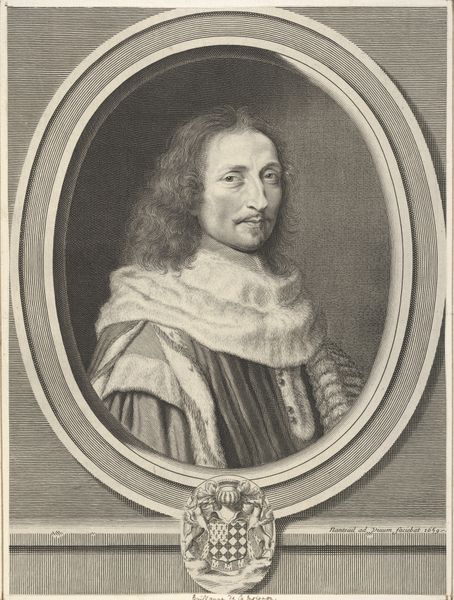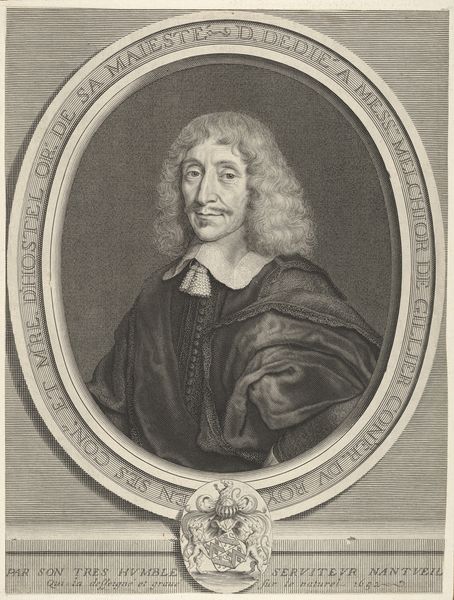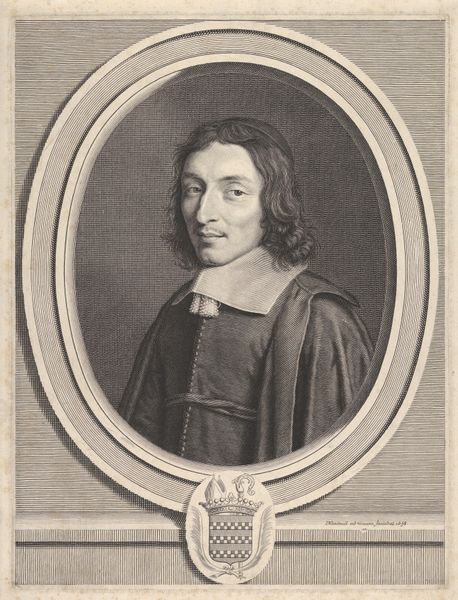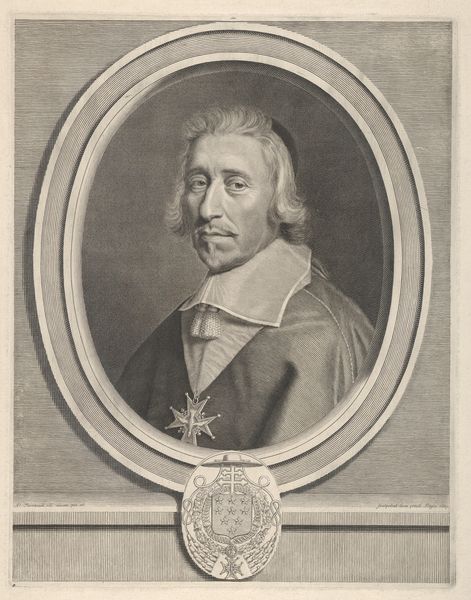
drawing, print, engraving
#
portrait
#
drawing
#
baroque
# print
#
engraving
Dimensions: Sheet: 12 5/8 × 9 5/8 in. (32 × 24.4 cm)
Copyright: Public Domain
Editor: We're looking at "Le chancelier Pierre Séguier," a Baroque engraving from 1657 by Robert Nanteuil. There's such an air of formal detachment in his expression; what layers do you see beyond the surface of this portrait? Curator: Indeed, it's fascinating to consider how portraits like these functioned within the complex social hierarchy of 17th-century France. Séguier, as Chancellor, was a powerful figure. This portrait isn't just about individual likeness; it's about projecting an image of authority. How does the very medium of engraving, with its meticulous detail, contribute to that sense of power? Editor: I guess the precision lends him a sense of control...but it's so formal, and removed from...lived experience, almost? Curator: Precisely. And that's where it connects to contemporary concerns. Who gets to be represented, and how? Consider Séguier's role in the suppression of dissent. This image becomes a tool, not just for remembrance, but for reinforcing a particular power structure. Does knowing that impact how you perceive the artwork's “beauty”? Editor: It makes me think about visibility and power, about who is remembered and who is erased in the historical narrative. Curator: Exactly. By examining these portraits critically, acknowledging the social and political dynamics they embody, we can start to question whose stories are being told – and whose are not. Editor: It makes you see the image in a new way. Curator: Right, understanding the historical context allows us to challenge the narrative embedded within the image itself. It's not just about admiring the technique; it's about interrogating the message.
Comments
No comments
Be the first to comment and join the conversation on the ultimate creative platform.
